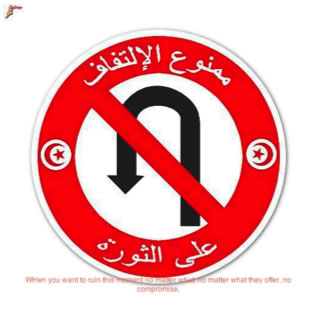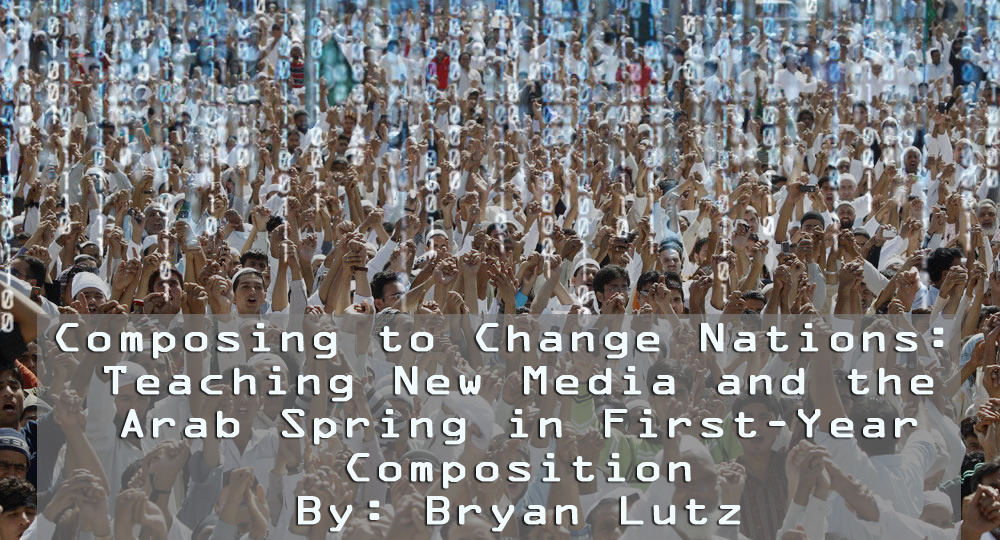The Arab Spring: Revolutions in Tunisia and Egypt
Lessons
 | ||
Tunisian Facebook Image, Unknown Author "They want us to turn back without a compromise" |
The revolutions of Tunisia and Egypt provides a keen example of how new media can be used to afford people political agency. The movement’s participants innovated with the technology to compose coordinated efforts, compose an identitities (using the technologies affordances rather than its prescribed templates), compose quickly and deliberately, and compose messages to change the materiality of where they live. If multimodal composing is akin to writing and writing is a social act, then all three seemed to be at play and with the liberatory effects that Paulo Freire dreamed of in Pedagogy of the Oppressed. These events were people on the ground working together to build knowledge in cyberspace and that knowledge afforded them agency to make change. I am of the opinion that we can explore this power in the classroom.
In the next section I argue that we can give students a flavor of this kind of advocacy. By rethinking new media composition with the kind of innovations seen in the Arab Spring, we can explore with our students how new media composition can be used as a tool for advocacy. To this end I offer instructors of composition a blog assignment designed to help students utilize their own digital literacies and their emerging knowledge of rhetoric and composition to compose for audiences outside the classroom. Though this work is largely inspired by research with the Arab Spring, it is of course different because it takes place in an American composition class. Thus the design of this project is also influenced by pedagogical traditions in rhetoric and composition, namely, that of global turns and civic engagement, as well as the use of new media in the classroom. However, this project has one key difference from previous work in that it uses blog affordances to connect students with social movements in the United States.
